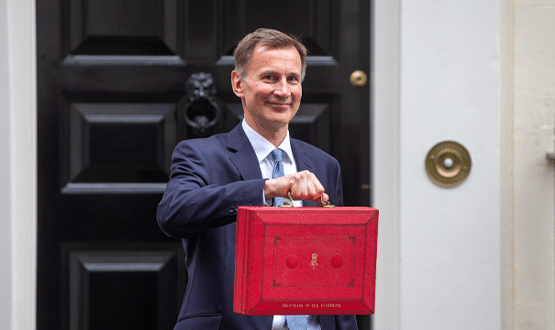Insider view
- 16 January 2014

A year ago, health secretary Jeremy Hunt announced that he wanted to see a ‘paperless’ NHS by 2018.
Twelve months on, the idea remains an important clarion call to action, without a huge amount of clarity on what paperless means, why it should be achieved, or how it will be taken forward.
Literally paperless a pipe dream
Almost nobody working in NHS IT believes in the objective in a literal sense. There is not a chance the NHS will have ceased to use paper within four years. Stationers and printers across the land can sleep a little easier.
Instead, at the top level, a ‘paperless NHS’ is a national policy initiative that succinctly conveys the urgent need to digitise England’s hugely complex, fragmented national health and care services, to help to achieve a host of pressing productivity, efficiency and clinical safety challenges.
The big question is how this can this be achieved when the NHS is facing a historic squeeze on budgets. Where are the priorities?
Or, to put it another way, what are the main business objectives of a drive to a paperless NHS? Many different and sometimes contradictory answers have been offered over the past 12-months.
Paper mash-up
Is ‘paperless’ primarily about clinical systems; replacing paper records with a drive to integrated digital health and social care records?
This was the clear direction provided by NHS England, when it published its ‘Safer Hospitals, Safer Wards: Achieving an Integrated Digital Care Record’ guidance last July. But the term has been used much more loosely, and for a much wider range of initiatives, even within the acute sector.
Or, is paperless really about catalysing a fundamental shift to online digital services, as seen in many other industries?
Is it meant to dramatically change the way in which many NHS services are delivered, create genuinely patient centred services, challenge many current professional roles, and drive productivity by eliminating a lot of jobs?
That’s the way that NHS England’s director of patients and information, Tim Kelsey, talks (except for the bit about eliminating jobs); and he clearly has Hunt’s ear – meeting him once a fortnight.
However, it has yet to be translated into working projects at a national level, never mind at a local one.
There is a growing air of frustration coming out of NHS England that numerous, brilliantly conceived websites and open data initiatives aren’t being realised and don’t seem to be solving knotty problems like A&E.
Tensions are also mounting between NHS England and the Health and Social Care Information Centre.
Which brings us to: is paperless really about marshaling, linking together and analysing the data resources of the NHS for the benefit of patients, but also public health statisticians, researchers and the life sciences industry – and, in so doing, save UK Plc?
Certainly, this seems to be the HSCIC agenda, and one that is put forward when presenting to ministers – including the prime minister, who has made several references to it at international conferences.
Papering over the cracks
Coming in the wake of the era of the National Programme for IT in the NHS, Hunt’s emphatic re-affirmation of the vital importance of information technology was both succinct and important.
But as a basis for formulating coherent strategy, it has so far proved of limited explanatory value. It has been extremely difficult to translate it into a set of clearly articulated national priorities that local organisations can then translate into local business plans and strategies.
This has not been helped by the different dates that have been put on the milestones on the digital journey, or by the handling of the Safer Hospitals, Safer Wards: Technology Fund that is supposed to fund them.
Although Hunt set out his vision last January, the first mention of paperless was made three months earlier at a London conference by Kelsey, who said he wanted the NHS to be paperless by 2015.
There followed some quick back-tracking, suggesting the focus of his remarks was electronic referrals and discharge letters; but while the new e-referral service will be live by then, the deadline for paperless referrals is now 2017 or 2018.
Hunt himself said that by paperless he meant that all records and communications in the NHS would be paperless by 2018.
As a foundation, he suggested the NHS should have records “that can talk to each other” by 2015; but this date has not found its way into subsequent, national guidance.
Meanwhile, a report by PriceWaterHouseCoopers to support Hunt’s speech suggested that the NHS could save £4 billion if the NHS invested in technologies ranging from records to document scanning to telehealth.
To help create a debate on priorities EHI last April launched the Big EPR Debate.
This was a major online consultation exercise, working with partners including NHS England, that found very strong support for a focus on electronic records and clinical systems that offered clear benefits to patients.
The results helped inform the development of the Clinical Digital Maturity Index, a benchmarking tool developed by EHI Intelligence to measure trust’s progress on installing clinical IT systems, now licensed on behalf of the NHS by NHS England.
It also appeared to inform and was in tune with the initial priorities for the tech fund. Hunt launched this in May with £260m of unspent capital funds, a figure that would later be increased to £500m, or, as he put it, “£1 billion for NHS IT” over three years, counting in matched funding from trusts.
At this point, it looked as though the Department of Health had decided that e-prescribing – one of the most critical elements of a hospital EPR system, offering measurable patient safety benefits – would be the focus of extra investment.
The move looked extremely shrewd. E-prescribing is a catalyst to driving clinical benefits, but almost impossible to achieve in isolation from a good infrastructure and other clinical information systems. Get one, and you’ll actually get the others.
By July, though, NHS England’s guidance on ICDR indicated that NHS Number, scheduling, and information sharing projects would also be funded.
And as NHS England sought to juggle competing priorities, and the practicalities of getting the first round of hot money spent by the end of the financial year came into view, even this focus was also lost.
The tech fund instead became available for a much wider range of projects including, but not limited to, portals, electronic document management, and mobile initiatives.
At least, that’s to judge from the initial announcements about winning bids that came out in December, many of which appear to be for ‘shovel ready’ projects that trusts had in hand, and might have taken forward in any event.
Time to take a fresh view on paperless priorities
With round two of the tech fund now about to kick off, it makes sense to take stock on ‘paperless’, now both a year old and due to be completed in just four years.
No successful commercial organisation would set ‘paperless’ alone as an objective. It would, instead, have particular business goals that it would aim to harness digital tools and data to deliver. The NHS urgently needs to find a way of adopting the same thinking.
What investments in clinical and business IT will result in ‘meaningful use’ that can deliver the greatest measurable benefits to patients and NHS providers? How can these be turned into a sensible, funded strategy that will make sure those benefits are delivered and can be measured?
And how can the experience of the different parts of the NHS be better shared and learned from, so successes can be scaled up? NHS England is promising that a technology strategy, delayed from December, will now be out in March. A lot may hang on it.




